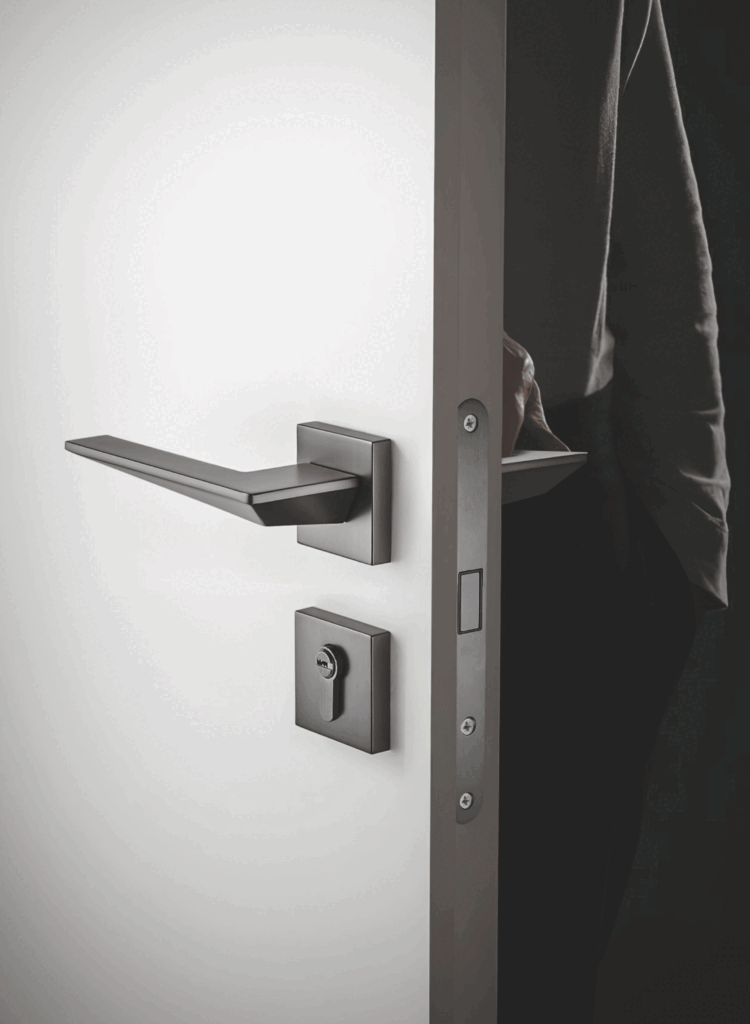Introduction
In door hardware systems, small components often play a significant role in both functionality and design. One such component is the lower rosette, a round element found around the base of the door handle. Though not always the focal point, the lower rosette is crucial for enhancing both the appearance and performance of door handles. In this blog, we will explore what a lower rosette is, its types, and how it contributes to the overall door hardware system.
What is a Lower Rosette?
A lower rosette is a small, round piece placed at the base of a door handle, often seen in split-type or divided-handle designs. It serves multiple functions, from adding aesthetic value to providing practical protection. Additionally, lower rosettes are often used to replace damaged components in the door lock assembly, making them an essential part of maintenance and repairs.
Types of Lower Rosettes
- Cylinder Rosette
A more decorative option, the gourd hole rosette adds a unique, elegant touch to the door hardware. - Knob Rosette
A classic, round design commonly paired with knob-style handles. It adds a clean, polished finish to the handle. Mostly used for bathroom door handles. - No-Hole Rosette
The no-hole rosette is a solid, simple design without any holes or openings. It offers a clean, minimalistic look that complements various door handle styles, especially where a smooth, uninterrupted finish is desired. - Key Hole Rosette
With an elongated shape, the oval hole rosette offers a sophisticated and refined look.
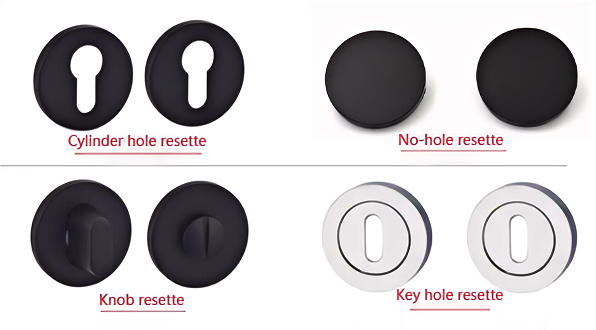
Common Shapes of Lower Rosettes
In addition to the basic designs mentioned above, lower rosettes can come in various shapes, adding both functional and aesthetic value. Some of the popular shapes for door handle rosettes include:
- Square Rosette
A straightforward, geometric design with sharp corners. Square rosettes give a modern and bold look, making them perfect for contemporary spaces.
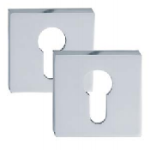
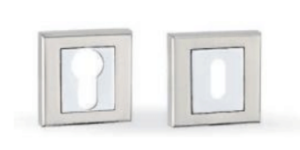
2. Outer Square, Inner Round Rosette
This shape features a square outer edge with a rounded inner cutout, offering a stylish blend of geometric and organic forms. It’s a popular choice for high-end, decorative handles.

3. Round Rosette
The most traditional shape, round rosettes can come in different styles. They may feature a Pot Cover Shape or a Circular Ring, giving a clean and smooth appearance. This classic design works well in a wide range of settings, from minimalist to vintage.
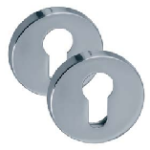
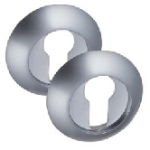
4. Textured Rosette
For added visual interest, some lower rosettes feature textured surfaces, such as engraved patterns or ridged designs. These can add depth and sophistication to the door handle setup, making them an excellent choice for decorative purposes.
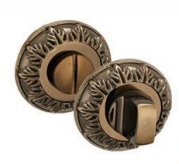
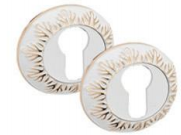
5. Oval Rosette
The oval-shaped lower rosette offers a more elongated look compared to round rosettes. It is often chosen for its refined and graceful shape, lending a soft, elegant aesthetic.
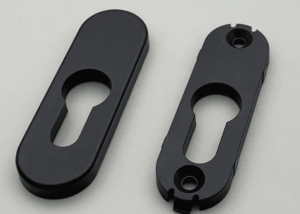
6. Irregular-Shaped Rosette
Irregular-shaped rosettes feature unique, asymmetrical designs, offering a distinctive look for door handles. They add a creative touch to modern or eclectic spaces, standing out with their unconventional form.

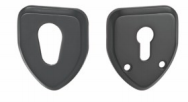
Key Functions of a Lower Rosette
- Aesthetic Enhancement
The lower rosette enhances the door handle’s appearance, adding elegance and a polished look that suits various door styles. - Prevention of Locking Out
The design of the lower rosette can assist in unlocking the door in the event of accidental lockouts, allowing external tools to be used through the small hole. - Protection Functionality
It helps prevent dirt and moisture from entering the internal components of the handle, extending its lifespan. - Ease of Installation and Maintenance
The split-type design of many handles with lower rosettes makes installation and maintenance simpler, allowing for easy replacement without removing the entire handle.
Installation Methods for Lower Rosettes
Proper installation of the lower rosette is key to ensuring the durability and functionality of the door handle. Here are the two most common installation methods for lower rosettes:
- Figure 1: Through-Screw Installation Method
This installation method requires only one base, making it straightforward and efficient. The base is attached to the door using screws, and the lower rosette is then fitted over it. An additional base is typically provided as a spare part in case future replacement is needed. Each lock cylinder cover comes with a standard base, making this method easy to implement across different types of locks. - Figure 2: Self-Tapping Screw Installation Method
In this method, the base is first fixed to the door lock using screws. Once secured, the decorative cover (lower rosette) is slid over the base and fastened in place with an internal hexagonal screw. This installation method applies to both square and round designs, ensuring versatility in different handle configurations.
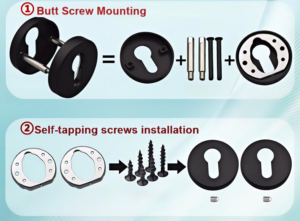
Conclusion
The lower rosette may seem like a small detail in door hardware, but its contribution to functionality and design is invaluable. Whether for aesthetic refinement, practical protection, or ease of maintenance, it is vital to enhance the door hardware system.
For those seeking high-quality door hardware, Umay offers a wide range of products, including lower rosettes, designed to meet the diverse needs of global customers. With Umay’s reliable solutions, you can ensure both the durability and visual appeal of your door hardware systems.
Share This Story, Choose Your Platform!

